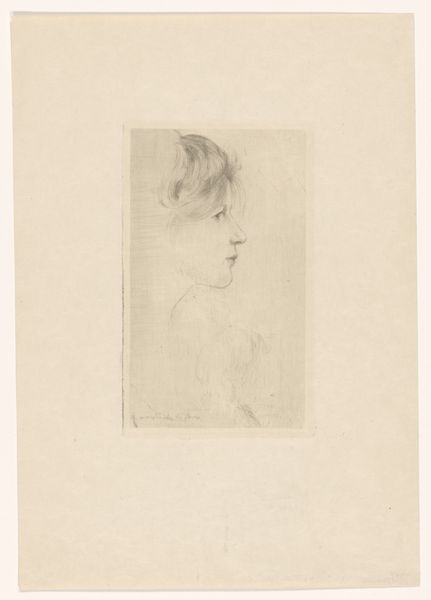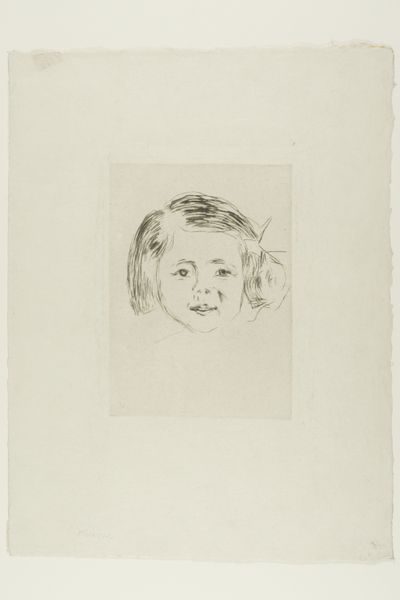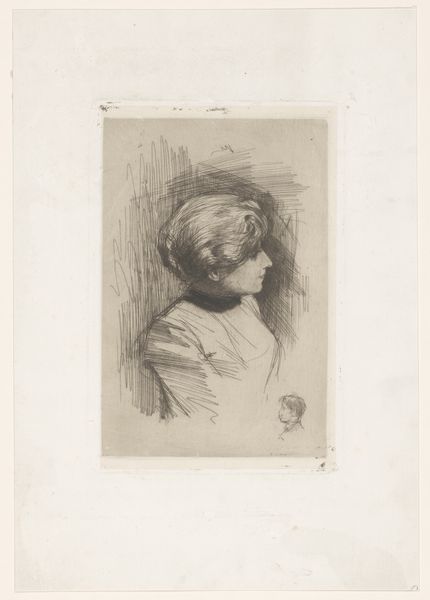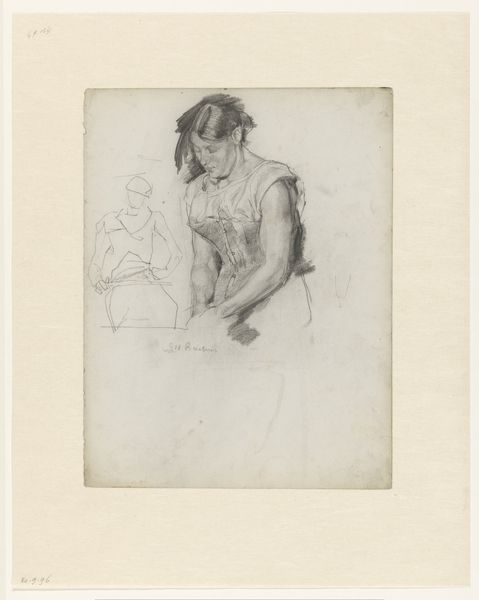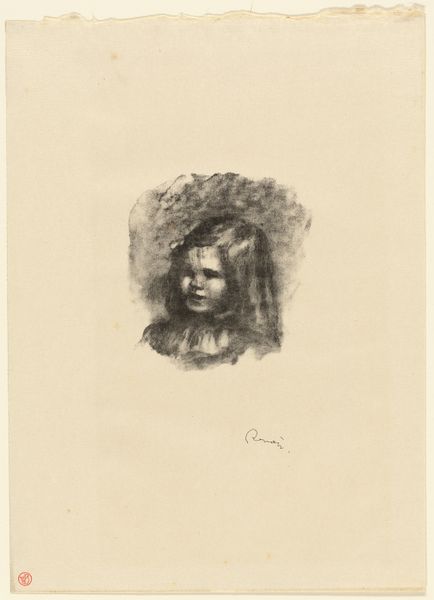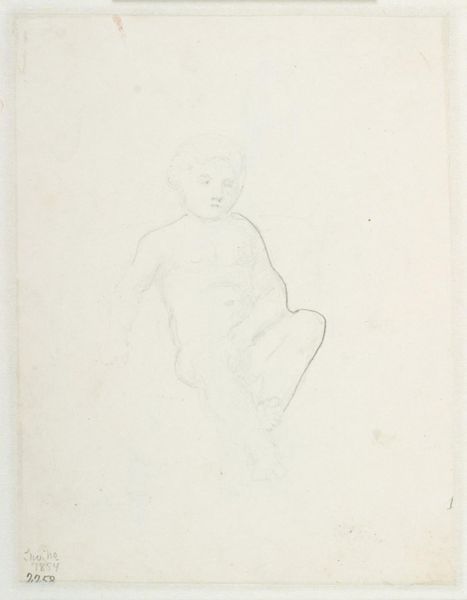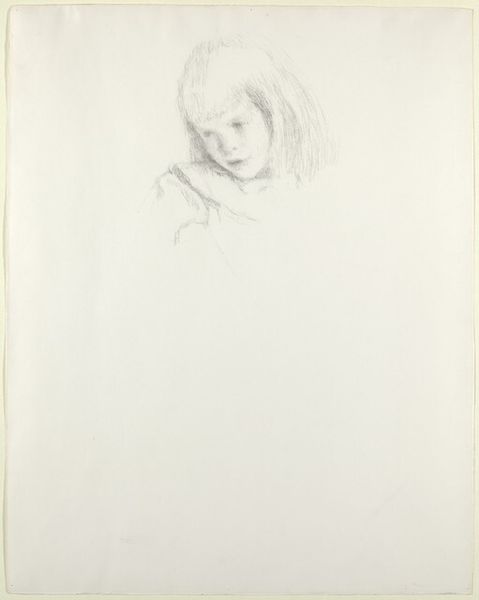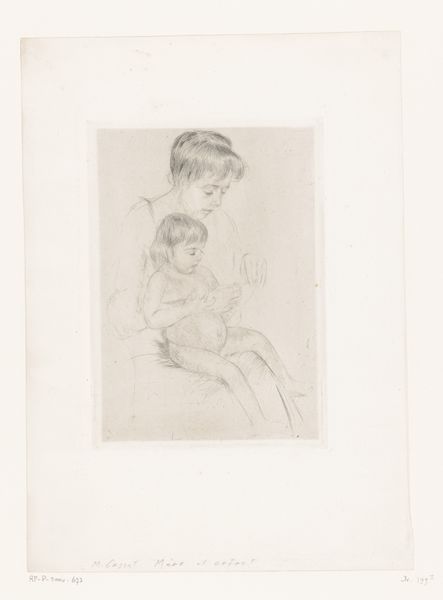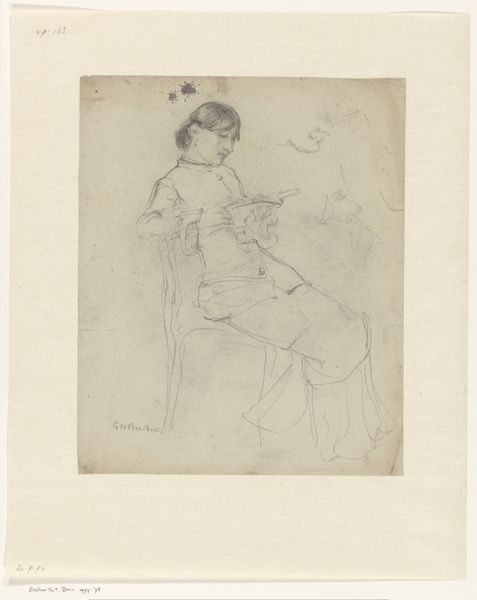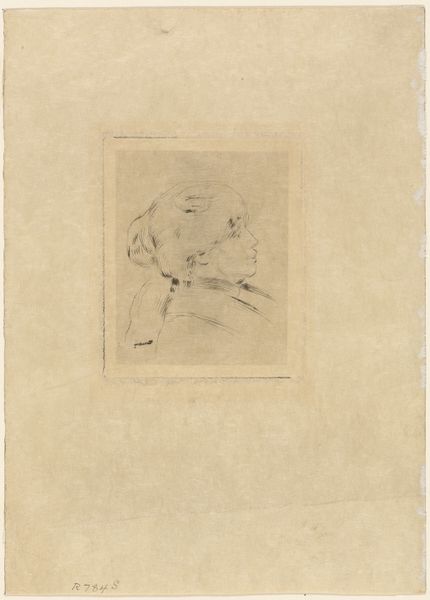
Dimensions: height 174 mm, width 135 mm
Copyright: Rijks Museum: Open Domain
Editor: This is "Kinderportretje van een meisje," a pencil drawing by Cornelis Spoor, made sometime between 1877 and 1918. The soft lines give it a very gentle and intimate feel. What do you see in this piece? Curator: This drawing offers a fascinating glimpse into the social role of portraiture during the late 19th and early 20th centuries. Consider the context: photography was becoming more accessible, yet painted or drawn portraits still held significant cultural value, particularly for commemorating childhood. How does the artist’s choice of pencil, a readily available and relatively inexpensive medium, impact its potential audience and perceived value? Editor: That’s interesting! It makes you wonder if this was a personal memento, more for the family than public display? Curator: Precisely. The intimacy created by the pencil strokes reinforces this sense of a private moment captured. Moreover, consider the pose. The girl's downcast eyes suggest introspection, perhaps even a hint of melancholy, deviating from the idealized depictions often commissioned. What could this imply about the family's social standing or artistic preferences? Was it, perhaps, intended to be a more ‘honest’ portrayal? Editor: It’s definitely less staged than I expected. So, by considering photography’s rise and the artistic choices Spoor made, we get a glimpse into the family’s values and maybe even their position in society. Curator: Exactly. We’re not just looking at a drawing; we’re observing a cultural artifact that reflects a particular moment and its nuances. Editor: I never thought about it that way, about portraiture having this intimate value in a changing society. It gives me so much to consider when looking at similar works! Curator: Absolutely. It’s a good example of how portraits functioned both privately and within a broader social and economic framework.
Comments
No comments
Be the first to comment and join the conversation on the ultimate creative platform.
